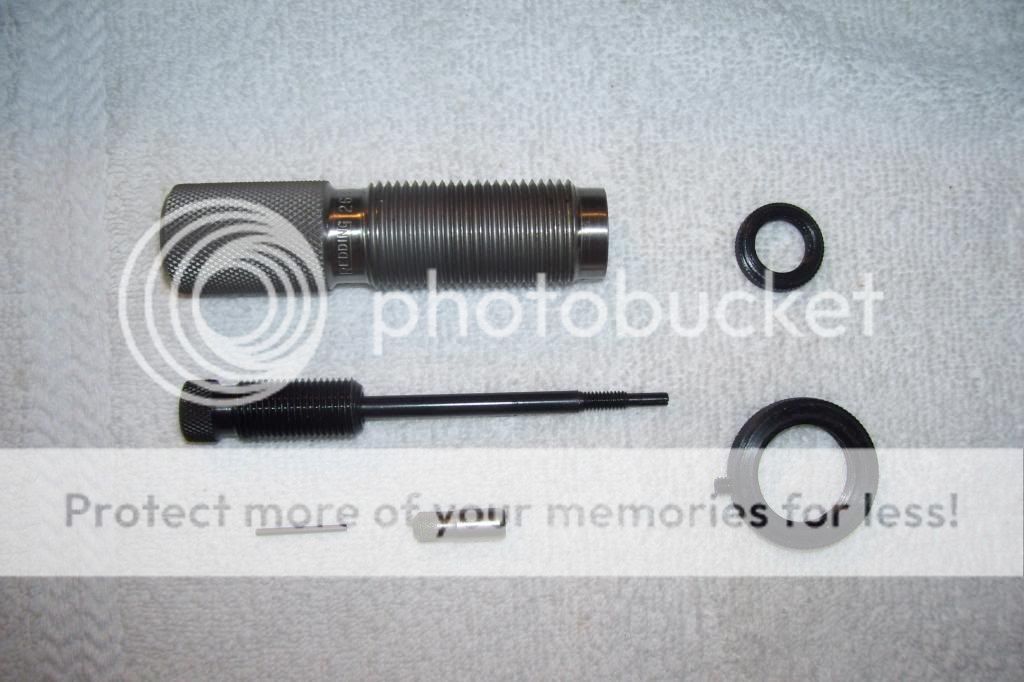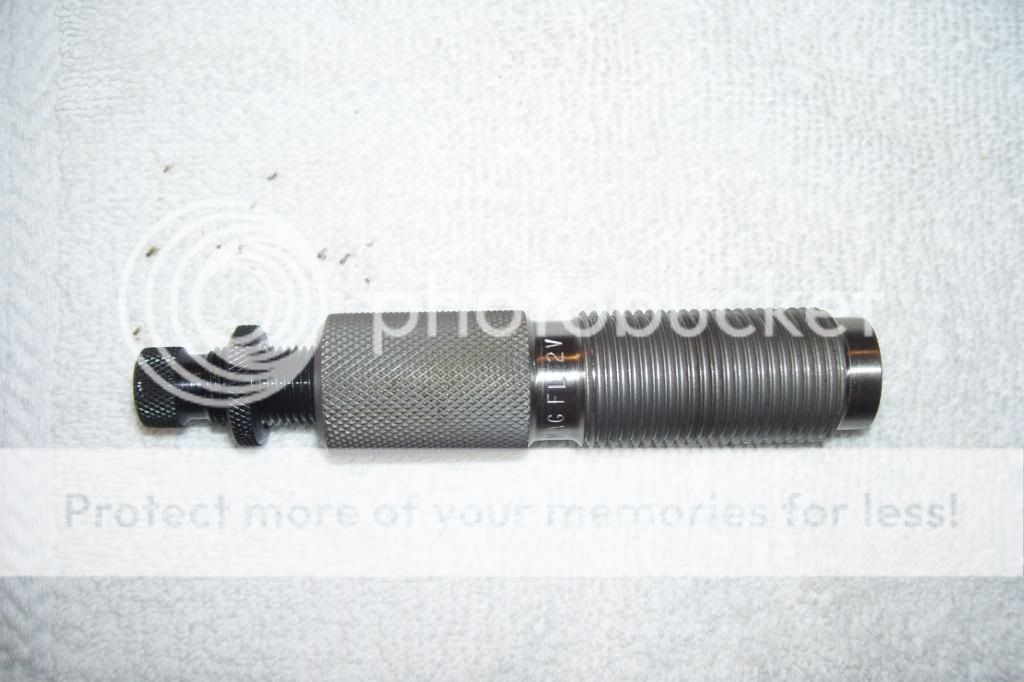killdeernow
Beginner
- Dec 20, 2006
- 199
- 0
Please be patient with me…alright, here we go. As some of you might know, I’m sort of a novice at reloading. I’ve conquered the 223 WSSM so I figured that was a major milestone for me heading to the next level of reloading. But the issue I need help with has set me back…I think. I’m using this forum because it seems like there’s a more intelligent/experienced crowd here that reloads (no pressure intended).
What we have below is a Redding 264 Winchester Magnum full length sizing die. All the pieces are dissembled (hex nut for lock screw is threaded but sticking out (I’ll lose it if I take it apart)).

Now, here’s the decapping pin/expander button assembly (help me w/the terminology if I’m screwing it up), assembled. Pretty easy stuff so far.

Next I assembled the decapping pin/expander button assembly into the die body (again, terminology?). Still pretty easy stuff.

Now comes the interesting part, so I think. It might be “normal” but it will take some convincing as to why. When I screw the decapping pin/expander button assembly into the die body (looking into the die body) it is oblong (not concentric) when you are screwing it in (you can see a still shot here and w/the human eye tell it’s not concentric).

In other words, the decapping pin/expander button is not concentric to it the die body when it is being screwed in. A matter of fact, you can wiggle the decapping pin/expander button assembly until you tighten down the lock nut. Is that normal? I found this picture online that captures my issue perfectly. When you are screwing down the decapping pin/expander button assembly it does what the bottom part of the diagram depicts.

Does the lock nut ensure concentricity when it’s tightened (top part of picture)? If so, how do I know?
Can you guys do me a quick favor and grab a few of your full length sizing dies and see if yours do the same thing? I’m thinking with all the “precision” talk about shooting, reloading, etc that this is something that needs to be addressed. My 223 WSSM Forster die does the same thing. I just never noticed it until went back to see.
Thoughts?
And BTW, thanks. You guys give awesome support/advice.
What we have below is a Redding 264 Winchester Magnum full length sizing die. All the pieces are dissembled (hex nut for lock screw is threaded but sticking out (I’ll lose it if I take it apart)).

Now, here’s the decapping pin/expander button assembly (help me w/the terminology if I’m screwing it up), assembled. Pretty easy stuff so far.

Next I assembled the decapping pin/expander button assembly into the die body (again, terminology?). Still pretty easy stuff.

Now comes the interesting part, so I think. It might be “normal” but it will take some convincing as to why. When I screw the decapping pin/expander button assembly into the die body (looking into the die body) it is oblong (not concentric) when you are screwing it in (you can see a still shot here and w/the human eye tell it’s not concentric).

In other words, the decapping pin/expander button is not concentric to it the die body when it is being screwed in. A matter of fact, you can wiggle the decapping pin/expander button assembly until you tighten down the lock nut. Is that normal? I found this picture online that captures my issue perfectly. When you are screwing down the decapping pin/expander button assembly it does what the bottom part of the diagram depicts.

Does the lock nut ensure concentricity when it’s tightened (top part of picture)? If so, how do I know?
Can you guys do me a quick favor and grab a few of your full length sizing dies and see if yours do the same thing? I’m thinking with all the “precision” talk about shooting, reloading, etc that this is something that needs to be addressed. My 223 WSSM Forster die does the same thing. I just never noticed it until went back to see.
Thoughts?
And BTW, thanks. You guys give awesome support/advice.




